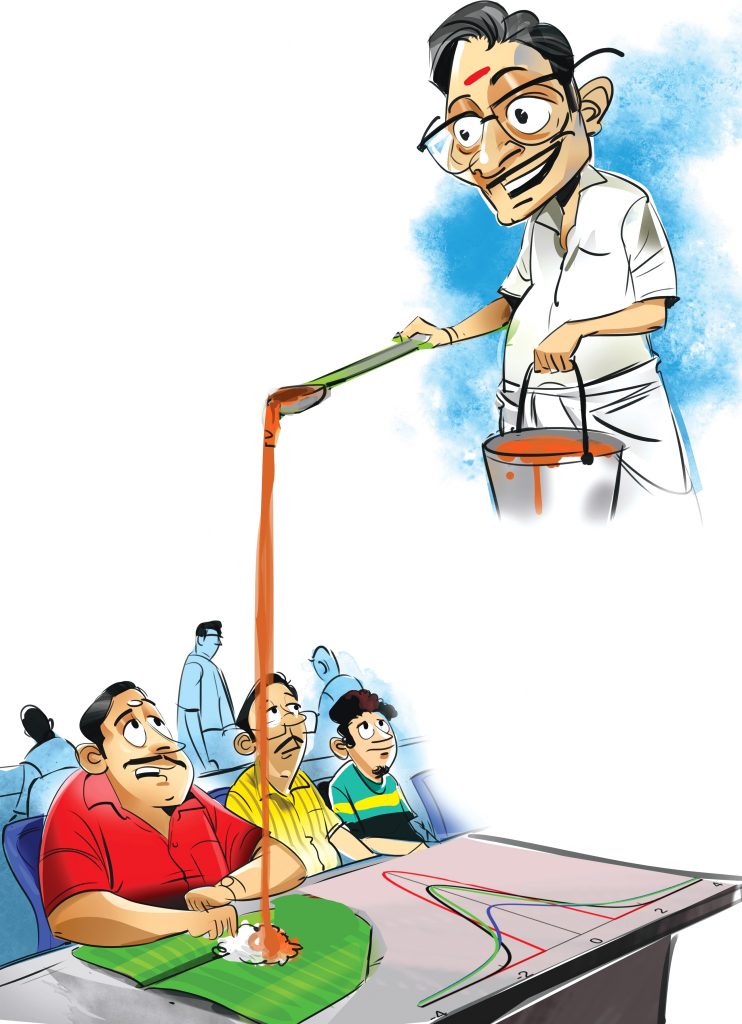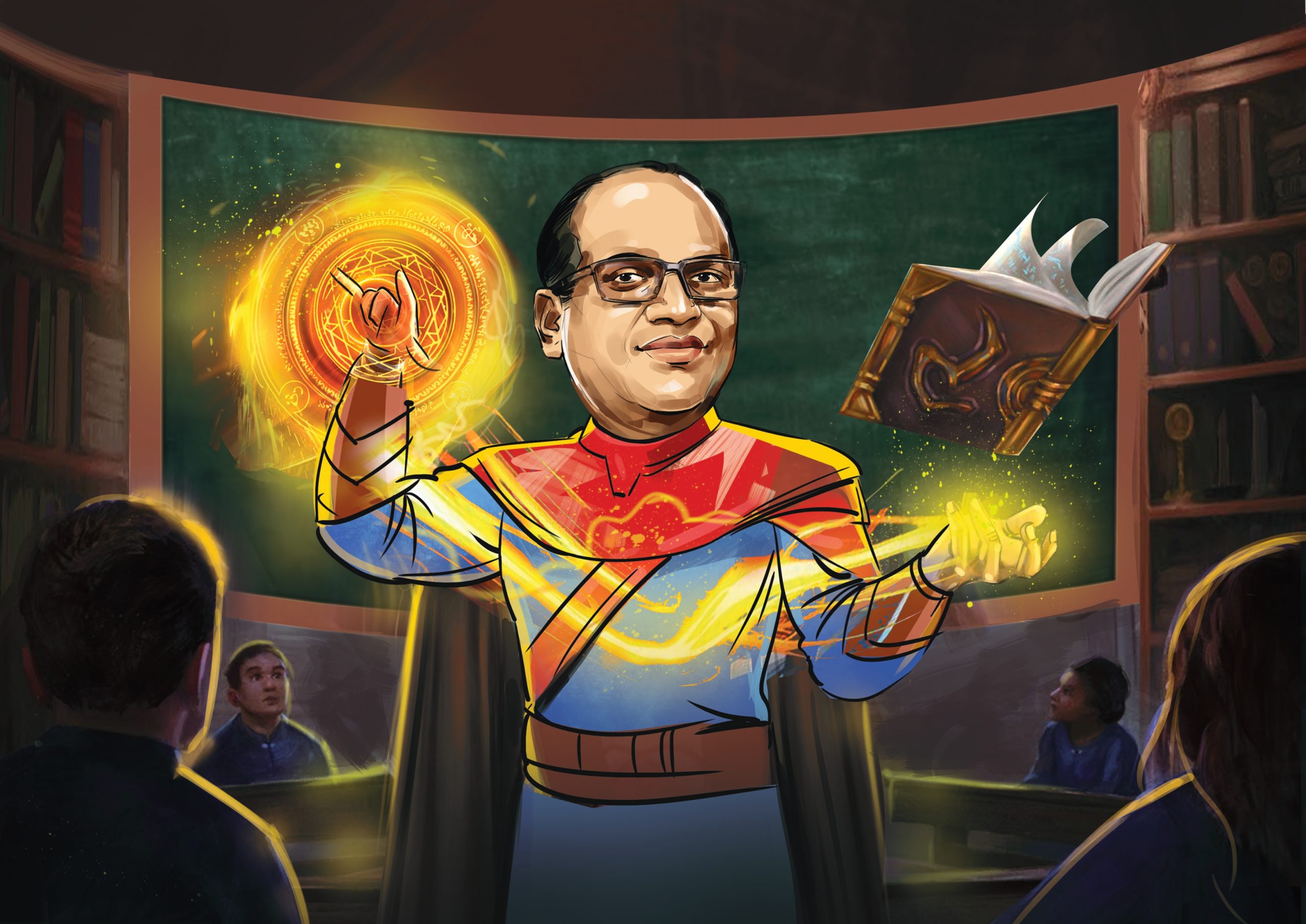As teaching evolves rapidly in an ever-changing world, how do professionals equip themselves to meet the demands of the times? What are the measures that professors take to ensure that they don’t fall back? How do they bridge the generational gap? Prof. C Balaji weighs in
C Balaji
Professor Martin Seligman, one of the leading lights on Positive Psychology from the University of Pennsylvania, U.S, avers that making difficult concepts look simple in class is one of the great sources of joy for him. Calling it his principal “signature strengths”, Seligman further adds that “inspired teaching” is one of the key motivators of his life. I cannot agree with him more. Teaching invigorates; it inspires! It ups the ante and helps push frontiers. Teaching can be a “deadly intoxicant” both for the teacher and learner.
As I step into my thirtieth year as a professor-researcher, having spent nearly 25 years at IIT Madras alone, I have so many vivid memories of what I would like to call “the great platform”: classroom. I am reminded of the quintessential classroom things: the intuitive insights; the all too-familiar frown, the stamp of approval, the “aha” causing a glow in the eyes, the burning desire to interrupt the teacher in order to get a point clarified, the peals of laughter, the pregnant pauses, the serious and animated discussions…the list is endless. The myriad hues the classroom offers is pure joy.
 The secret sauce
The secret sauce
At the risk of sounding modest, I must admit that good teaching is always a work in progress. In the ensuing journey, the role of successive batches of students in shaping the sharpness of delivery is by no means small. The secret sauce to my teaching is the belief that the best is yet to come. This boyish enthusiasm is the fuel that powers the engine of inspired teaching.
I believe clarity and care are the cornerstones of high-quality teaching. Needless to say, clarity in this context is an umbrella word that includes hard work, motivation, adequate preparation and the willingness to engage with students. Without the aforementioned attributes, clarity becomes a casualty. A caring teacher constantly looks for the glow in the eyes of students, which in turn reflects on the effectiveness of their teaching. This care needs to evolve with time and has to be more inclusive such that even the person sitting in the last bench is convinced of what’s being taught.
Over the years, I have learned to overlook students’ behaviour in the classroom. This quality has made me affable and has helped to deliver in class. The early days, especially at a time when students were just a couple of years younger to me, were a wonderful training ground for me. Students would constantly try to score a point from me and I would try to combat them.
These formative years are important for a young academic to prepare, engage and deliver. Lately, though, I find the “desire to challenge the teacher” has reduced substantially. This does not resonate with me. You do need a certain degree of irreverence from students to teach at the highest level.
Sustaining students’ interest in and out of the classroom continues to be a challenge. We, as teachers, have a problem at hand and we have got to deal with it. Students from the latest Generation Z come with varied interests that result in reduced attention span. This is perfectly understandable in a rapidly changing digital world where AI is taking the world by storm. Tools like Chat GPT have only compounded the problem. Figuring out a successful teaching-learning (TL) process is akin to finding an oasis in a desert! The teachers of today and tomorrow have to reinvent themselves over time in order to stay relevant.
Changing times
 Let me quote from my personal experience. Giving surprising examples, presenting intuitive and counterintuitive perspectives to the lesson being taught and engaging the students with in class problem solving methods are some of the measures that can serve as an antidote to the challenging TL process.
Let me quote from my personal experience. Giving surprising examples, presenting intuitive and counterintuitive perspectives to the lesson being taught and engaging the students with in class problem solving methods are some of the measures that can serve as an antidote to the challenging TL process.
The last of the aforementioned strategies requires enormous effort on the part of the teacher to come up with new and challenging problems. When it comes to surprising examples, let me share one that has really worked. In a modelling class, let’s say I start with the question, “Why is homemade sambar tastier than restaurant sambar?”
After waiting for responses, I tell them that the taste of sambar can be mathematically modelled using the laws of probability. If the control variables are the quantity of vegetables, lentils, curry powder, tamarind and so on, one can argue that the taste of sambar actually follows a Gaussian with maximum occurrence, when each of these quantities is at an optimum value. Now, the final taste is a joint probability density function which is a product of all these probabilities.

At a restaurant, the quantity of each of these ingredients is fixed as the process is industrialised. Hence, the taste is maximum that gets insipid after repeated visits. Therefore, there is no variability in taste which makes it devoid of any surprises. The homemade sambar, on the other hand, is not based on exact measures and the natural variability in the quantities of each of the ingredients makes the final taste different every time.
This simple sambar example gives hope to students who might get overwhelmed with the idea of modelling. We have noticed that creative examples not just help in understanding the concept but have a better recall value. Ultimately, teaching and learning are cornerstones of a progressive society. And “inspired instruction” and “joyful learning” are sine qua non in the development of communities, societies, nations and the world itself. Happy teaching. Happy learning.








